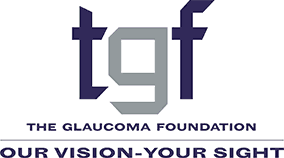~How Blue Light Affects Glaucoma Patients~

Over the past few decades, technology has become mainstream with the proliferation of devices like smartphones. Today, technology is so ingrained in daily life that a 2021 research study states that Americans in their early twenties used their phones an average of 28.5 hours per week. While these technological developments have been extremely helpful and undoubtedly make everyday routines easier in many ways, excessive use can pose several risks to physical health and well-being. This is especially true for individuals who are dealing with glaucoma diseases—as they are more susceptible to loss of vision and other eye issues due to dysfunction in their optical nerves. One of the more common ways these risks tend to happen is through the eyes’ exposure to the blue light emitted by screens.
Understanding the effects of blue light
Blue light is a type of high-energy visible light that is emitted by the sun and electronic devices such as smartphones, computers, and televisions. Nowadays, this type of light is considered disruptive due to nearly 1/3 of all visible light being blue light. Excessive exposure can cause eye strain, headaches, and even disrupted sleep by impairing the circadian rhythm.
That said, while too much blue light exposure is harmful to everyone, it is especially damaging to those who deal with glaucoma diseases. This is because glaucoma patients also experience light sensitivity due to optic nerve damage. As a result, this can cause patients to experience discomfort when using these everyday devices. In some cases, the harsh wavelengths from blue light can cause such issues that the readability of onscreen text is affected. , and the presence of harmful wavelengths, such as blue light from screens, makes it difficult for them to utilize these devices. In fact, it even contributes to the worsening of their glaucoma due to retinal cell death, commonly caused by excessive screen time.
Specifically, studies from a bioengineering journal state that blue light exposure has been observed to decrease the survival rate of retinal ganglion cells (RTC) among those with glaucoma. RTCs are the neurons responsible for receiving and sharing visual cues and stimuli with the brain. When the RTCs are adversely affected, this leads to the development of glaucoma diseases. The same journal even states that, in some cases, excessive blue light exposure can directly lead to the early onset of glaucoma. This is especially noteworthy among those with a genetic predisposition for glaucoma, as we can surmise that too much blue light can hasten the condition’s development.
Limiting the adverse effects of blue light on glaucoma patients
Taking regular screen breaks
Regular breaks allow the eyes to rest and lubricate, which is necessary for glaucoma patients due to their dry eyes. Ideally, looking away from screens for as short as five to 10 minutes every hour or following the 20-20-20 rule (staring at something 20 feet away for 20 seconds every 20 minutes) will do wonders to help avoid eye strain and other harmful effects of blue light exposure. By practicing good habits like this, you’re complementing your protective efforts and creating a well-rounded eye care plan.
Wearing blue light glasses
Directly shielding the eyes can greatly increase defense against blue light, no matter the source. As such, protection can come in the form of blue light glasses. This type of protective eyewear makes use of blue-violet light filters that can be applied to both prescription and non-prescription glasses. LensCrafters is one such brand that specializes in blue-violet light filtering lenses, which they can then fit into a variety of popular frames. These frames include models from diverse brands like Burberry, Oakley, and Ray-Ban. The aforementioned blue-violet light filters are designed to reflect excess light waves so they bounce off the lenses instead of penetrating the eyes. This is especially important for glaucoma patients, as prolonged exposure can leave serious damage, such as vision loss.
Using screen filters
Paying attention to lighting conditions and display settings is extremely important for glaucoma patients due to their optic nerve damage. One way to address this is through screen filters. An example of this is EyeJust, a brand specializing in blue light-blocking screens for laptops and Apple products such as the latest iPhone and iPad models. These screen filters are an efficient way to lessen the intensity of harmful wavelengths emitted by electronic devices. This is achieved by utilizing a special type of coating that blocks light within the 380-500 nanometer range. The filters also help with reducing harsh glare, which is extra harmful to glaucoma patients as it not only causes discomfort but also causes irritation and optical migraines.
Article written by Rose Joanne
